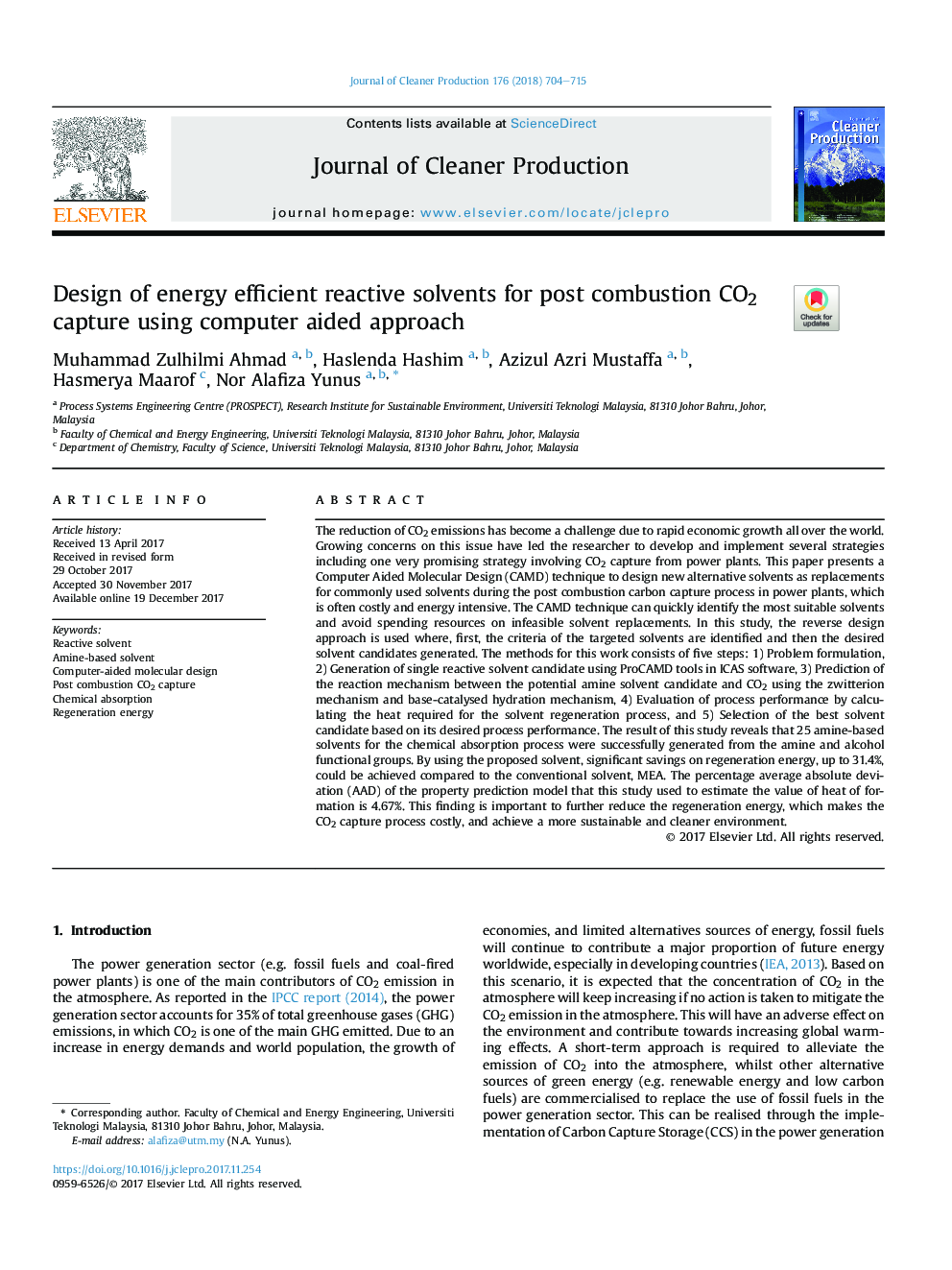| Article ID | Journal | Published Year | Pages | File Type |
|---|---|---|---|---|
| 8099260 | Journal of Cleaner Production | 2018 | 12 Pages |
Abstract
The reduction of CO2 emissions has become a challenge due to rapid economic growth all over the world. Growing concerns on this issue have led the researcher to develop and implement several strategies including one very promising strategy involving CO2 capture from power plants. This paper presents a Computer Aided Molecular Design (CAMD) technique to design new alternative solvents as replacements for commonly used solvents during the post combustion carbon capture process in power plants, which is often costly and energy intensive. The CAMD technique can quickly identify the most suitable solvents and avoid spending resources on infeasible solvent replacements. In this study, the reverse design approach is used where, first, the criteria of the targeted solvents are identified and then the desired solvent candidates generated. The methods for this work consists of five steps: 1) Problem formulation, 2) Generation of single reactive solvent candidate using ProCAMD tools in ICAS software, 3) Prediction of the reaction mechanism between the potential amine solvent candidate and CO2 using the zwitterion mechanism and base-catalysed hydration mechanism, 4) Evaluation of process performance by calculating the heat required for the solvent regeneration process, and 5) Selection of the best solvent candidate based on its desired process performance. The result of this study reveals that 25 amine-based solvents for the chemical absorption process were successfully generated from the amine and alcohol functional groups. By using the proposed solvent, significant savings on regeneration energy, up to 31.4%, could be achieved compared to the conventional solvent, MEA. The percentage average absolute deviation (AAD) of the property prediction model that this study used to estimate the value of heat of formation is 4.67%. This finding is important to further reduce the regeneration energy, which makes the CO2 capture process costly, and achieve a more sustainable and cleaner environment.
Keywords
Related Topics
Physical Sciences and Engineering
Energy
Renewable Energy, Sustainability and the Environment
Authors
Muhammad Zulhilmi Ahmad, Haslenda Hashim, Azizul Azri Mustaffa, Hasmerya Maarof, Nor Alafiza Yunus,
